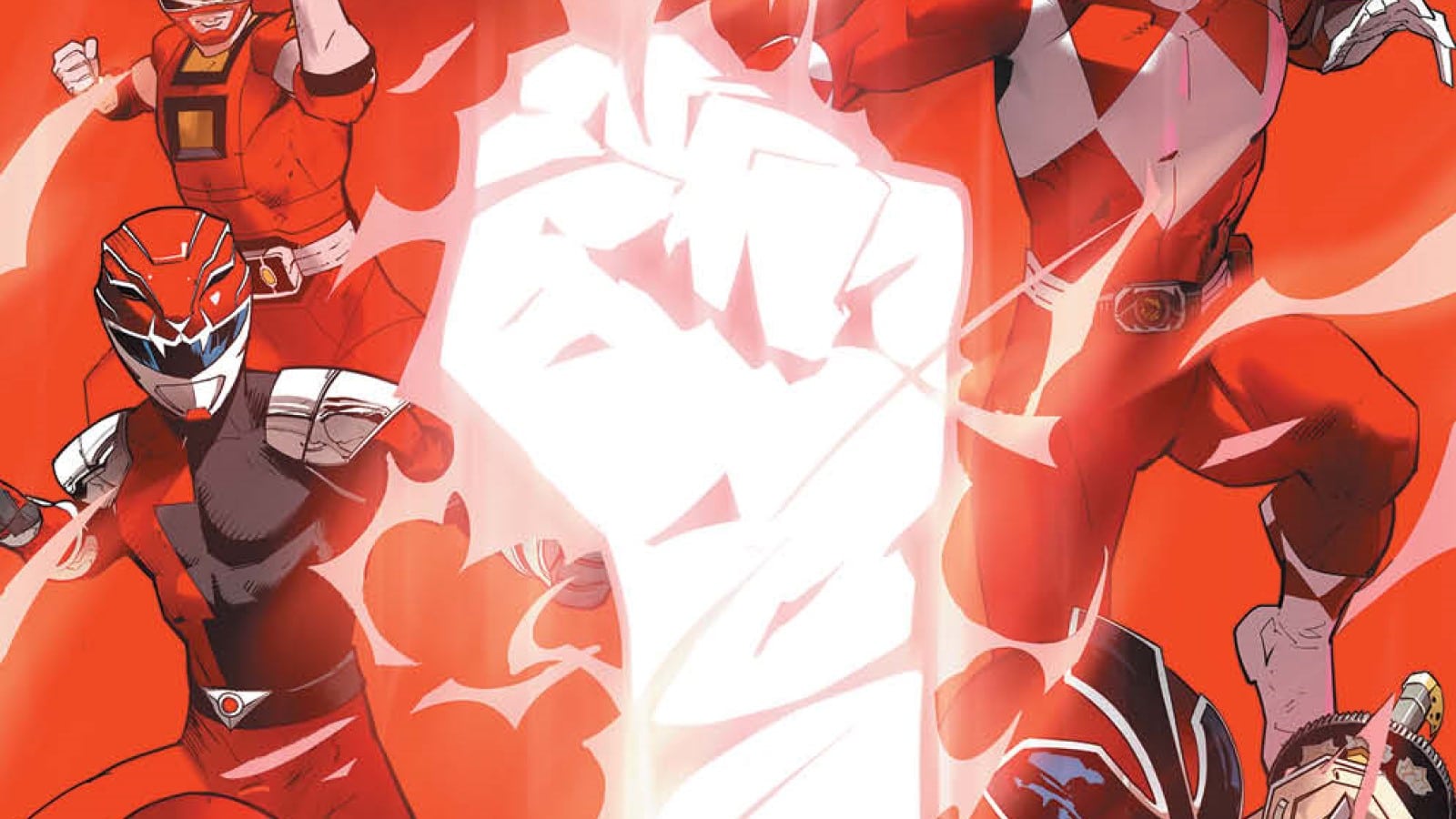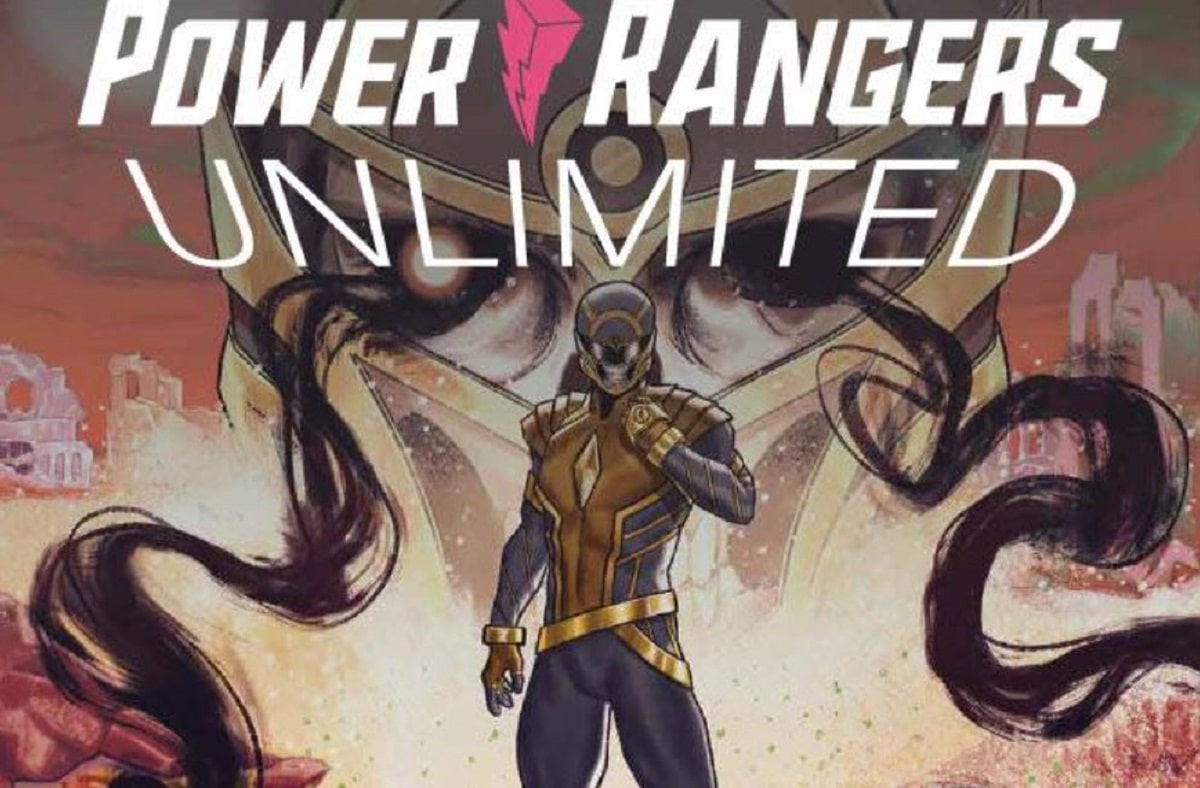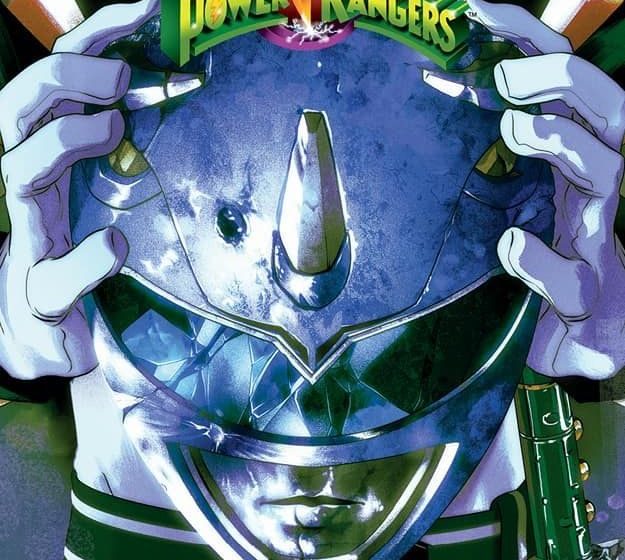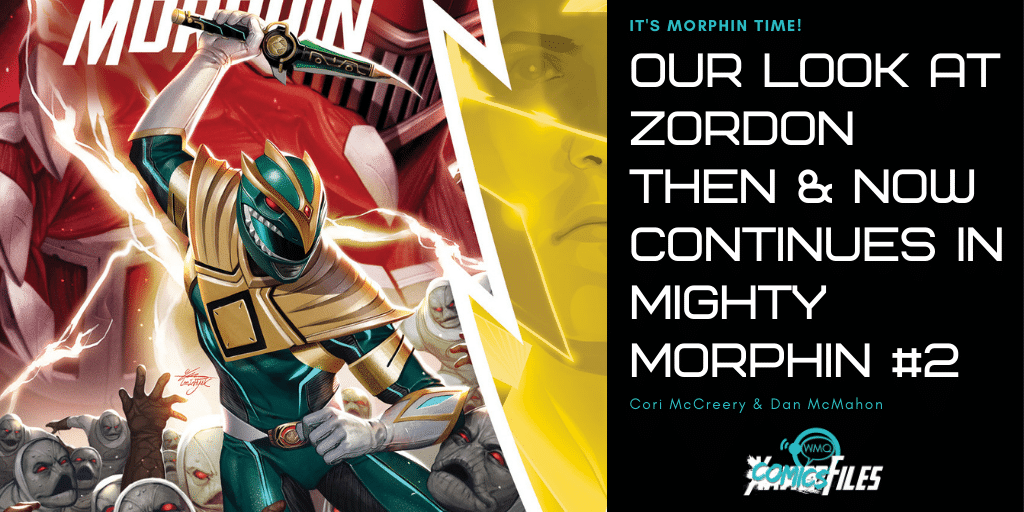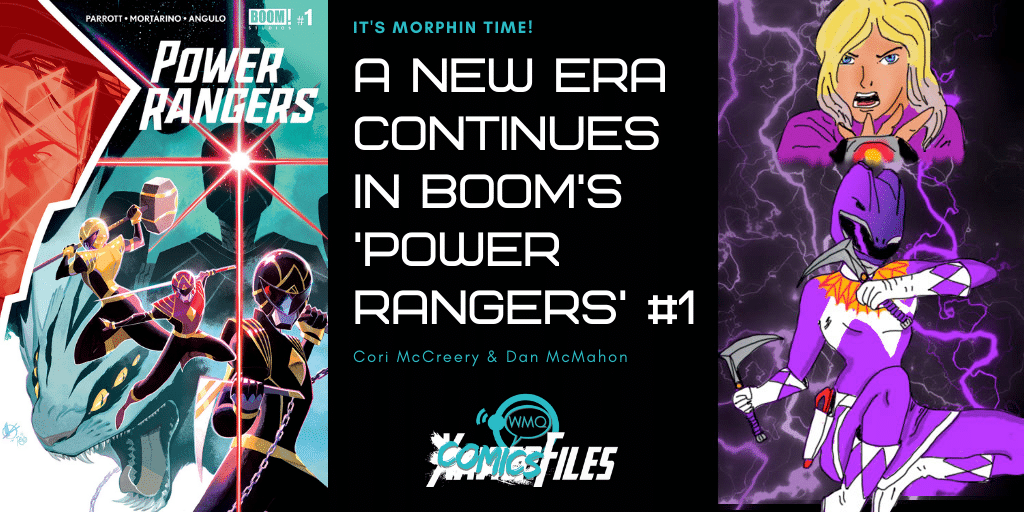What is the true origin of the Phantom Ranger? And what is his connection to the Morphin Grid? From the moment he first appeared 24 years ago, fans have wondered about the origin of the mysterious Phantom Ranger. Questions which have never been answered, until now. BOOM Studios presents a limited-series event that will delve into the deepest origins of the Power Rangers Universe, courtesy of writer Nicole Andelfinger, artist Simone Ragazzoni, colorist Mattia Iacono and letterer Ed Dukeshire.
Ritesh Babu: A bold new #1! An exciting new creative lineup! Power Rangers! Let’s talk about it! So, Ari, what’s your experience and history with Power Rangers?
Ari Bard: I watched random episodes as a kid of various different versions, but I can’t remember anything from them. I thought the 2017 movie was pretty fun, though!
Ritesh: Meanwhile, I, on the other hand, obsessively watched it season after season and remember FAR TOO much. In fact, I dig the damn thing enough to have watched a ton of Super Sentai, the original tokusatsu series that the entire franchise is a riff/American retooling of. I was very much not a fan of that 2017 film though, I’m sad to say (I know! I wish I dug it more! Alas). Mostly though, Power Rangers proper is something I’ve been out of for … over a decade now? By which I mean I quit at RPM, the 2009 season, and have not been “current” since. I’ve watched a bunch of Sentai seasons, and I even watched the ’90s Turbo movie for the first time this year:

Look at that damn poster. But yeah, all of that is to say, I’ve mostly been out of it, despite being raised on this stuff. And I’ve moved over to the source of it by now, thus eliminating any sense/need or urgency to do the new seasons of PR.
Which leaves the BOOM Studios comics in an interesting place. They’re less about doing what the shows itself do and are not trying to be retoolings of a Sentai season or two. They know they can’t be what the show was, and so they’re instead more of a trek through the specificity and texture of the overall sprawling Power Rangers history and canon that’s been built up over the decades. If you loved these characters or casts, these comics are aimed at you.
Which brings us to Power Rangers Universe #1.
Ari: Yes! Everything I know from osmosis about Power Rangers comics has led me to believe they’re largely about connections. There are so many different versions of Power Rangers across time and space from different shows and movies. They have different abilities, different motivations and different problems. From the outside and even from this comic, it can feel like a Gordian knot of a universe, which can be mighty fun but also mighty difficult, and both of those feelings came through in Power Rangers Universe #1.
Starting with the fun, this comic is really swinging for the fences. From the style, to the stakes, to the artwork, Power Rangers Universe #1 doesn’t back down. It’s big and bold and from the getgo we’re jumping across centuries, fighting gods inside a giant Grid and are constantly worried about connecting an energy source while protecting their homeland. It’s a world you’re instantly enveloped by just from spectacle alone with its uses of bright white and gold. There’s a nobility to it in that sense.
Unfortunately, a lot of these attributes can be a double-edged sword. There’s so much unique language in every bubble of dialogue that it can be hard to get through. Characters’ personalities are often buried under a barrier of technology and magic that can be difficult to penetrate. There’s a lot I still don’t know after reading it quite a few times over, but I suppose a brief rundown of this Grid and the Phantom Ranger might help. What’d you make of things, Ritesh?

Ritesh: So interesting thing here: This comic seems to very much be entirely built off Power Rangers Turbo and In Space. That’s where the Phantom Ranger is from. But Turbo and In Space were not my series. My first series was the one literally right after those two, Lost Galaxy! I watched everything from Lost Galaxy on to RPM. All I’ve seen of Turbo/In Space is through those other shows/references (Heyo Dino Thunder Anniversary!).
That’s a long way of saying what I know about the Phantom Ranger beyond the basics is very little. The basic 101 is he’s a mysterious Alien Ranger who’s been around for a good bit and has a slick ship. And he’s been a big mystery of sorts over the years. Which is what this comic is really about and is exploring — the roots of the Phantom Ranger and his connections to the Morphin Grid.
Now for the Morphin Grid, it’s basically a multiversal all-encompassing source of all Ranger power. It’s the one big consistent thing across every single PR iteration no matter how different they are from what came before and after. All of their “morphers” tap into the all-powerful, all-mysterious Morphin Grid. Little is said of it and they don’t explain it too much to you, but it is in essence a grand cosmic mythic place and the source of all power in the mythology.
Ari: That was a good primer! That really locks into place the energy source they’re trying to tap into and the mysterious character that bookends the story. The rest of the comic sort of revolves around themes of learning about the past and finding lost friends with an added bonus of gods and dinosaurs, which are a fun combination, but they emit a lot of chaotic energy that draws the book’s momentum onto all of these flashy, external elements. This leaves a lot of the characters feeling hollow.
Ritesh: Yeah, this book is … it’s heavy, and I mean HEAVY, on lore and plot, and that makes it tricky. It feels very much like a comic for the super-entrenched, and so while I got the basics of the Morphinaut (who will become the Phantom Ranger, I suppose) and the whole story being a mystery about the Grid, with him going missing and us cutting to centuries later, I still came away feeling empty.
The cast of characters we’re introduced to here are a riff on the Morphin Masters, a sort of sage collective of almighty Ranger-power people in the future of the Power Rangers world. I reckon given we’re seeing the roots of all this stuff, we’re getting early days peeks here. Even “The Monster” we see here seems to be potentially Dark Specter, a character who’s basically the Darkseid or The Devil-esque figure in the PR-lore. He’s literally The Monarch of Evil or whatever.
And while I can see how all of that being unstated, left to be read into, theorized and guessed over can be great fun for the diehard, entrenched PR reader, I think you really lose the chance to get new people in on this. I really wish this introduced its sprawling cast a bit more clearly, and that we got to breathe a bit more. But alas. It very much does follow the sort of typical disaster movie approach of big events like this. It does that fairly well, I think! Ragazzoni and Iacono are a terrific matchup as an artistic duo for this. It looks like slick, pop, sci-fi spectacle, and the angles Ragazzoni tends to choose often emphasize scale and go for dynamism. It looks great, and it reads well, too, as Andelfinger and Dukeshire really lay things out in a fun way.
But I wish I also cared about these characters.

Ari: Definitely. Going into a comic called Power Rangers Universe #1, I expected a sort of reboot, an all-encompassing introduction or some sort of major crossover, but instead this appears to be a deeply rooted, lore-based miniseries. The Rangers themselves are interesting as a collective but fail to shine on an individual level. Hopefully some characters start to stand out on their own in future issues, especially with the antagonistic force being just that, a large, dark entity and nothing more.
Nevertheless, you’re spot-on about how everything’s laid out. The panel layouts and different color palettes really draw your eye across the page in some unique ways. The SFX often bridge panels, scenes and pages together. This does truly feel like a collaborative effort as the team tries to lay everything out for the reader in a way that isn’t intimidating beyond its volume. There’s a lot there, for sure, but I also feel like I could look up things I don’t understand or really study what’s going on and break it down. The story is buried, but not impenetrable.
Ritesh: Yeah. It can very much be parsed out and stuff can be looked up for clarity, but I just wish there was at least one page or two before the opener to really ease in folks who aren’t as tuned into all this. This is clearly Big Important Stuff, and when it’s all said and done and a nice little collection, I feel like you’d want more “Ooh, read this cool historic story of the Power Rangers Universe that you can hand to your pals who’ve never watched any Ranger stuff!” and less “If you’ve always theorized about the Phantom Ranger, Dark Specter and the Morphin Masters, boy, do I have the comic for you!”
I wish it was less insular and more welcoming, in that sense, but also for the audience it does aim for, and what it is, I reckon it’s well done. I’m hoping the characters get more in the next issue and we get to settle in with them a bit more. This was just sort of the big opening disaster in media res. Given we’re past the shocking start, I’m curious to see where this heads.

